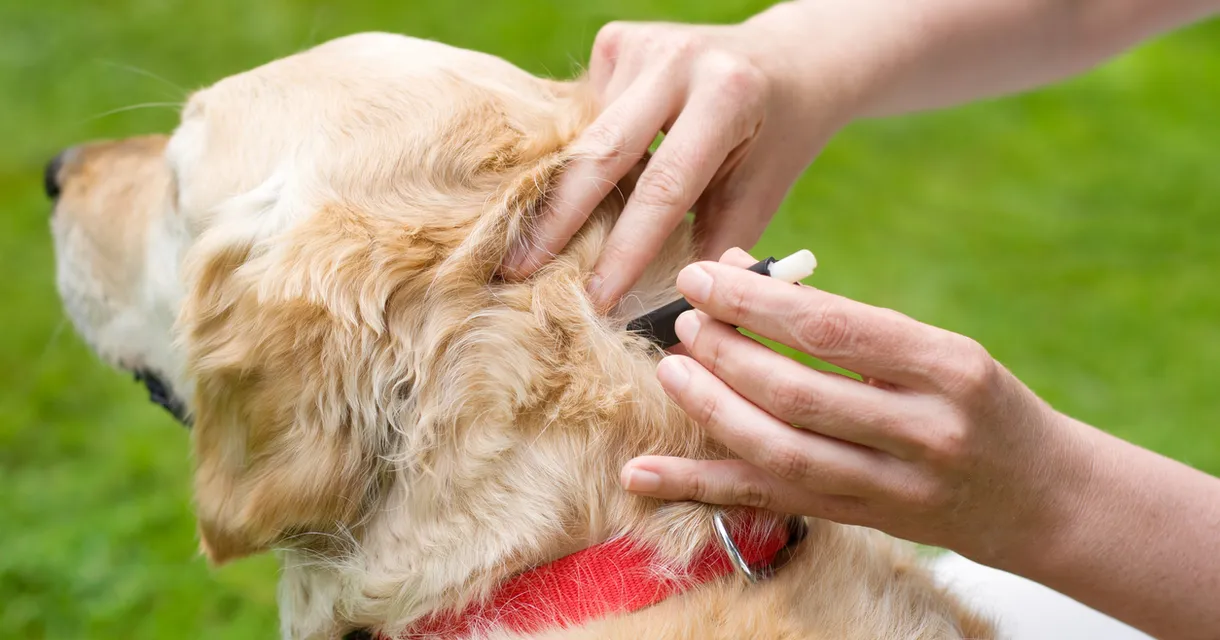Autumn is in full swing and while you may be spending a little less time outdoors due to the worsening weather conditions, you will still be enjoying daily walks with your dog. For this reason, your pet is still vulnerable to getting a tick. Ticks tend to lurk under leaves throughout Autumn, so as a dog owner, investing in a tick repellent for dogs should be a priority. Here is a guide to everything tick related from prevention to treatment.
Tick Prevention for Dogs
Ticks carry a number of diseases that could be detrimental to the health of your dog and with ticks anywhere from your garden to the local park, it is essential that you are aware of the dangers and know how to protect your dog against ticks. You should inspect your pet for ticks after they have spent time outdoors and if you find a tick on their body, you should remove it straight away. Ticks are attracted to warm crevices so be sure to check the ears, under the legs and belly folds thoroughly.
Frontline Tick Treatments for Dogs
As well as regular tick checks, you can invest in a tick treatment such as Frontline tick protection that you can apply every four weeks directly to the animal’s skin. While treatments such as Frontline Spot On and Frontline Spot On Plus do not repel ticks, they kills ticks that attach themselves to your pet within 48 hours. The treatment is applied to the neck area and blends with the oils contained in the dog’s coat to offer long lasting protection of ticks. Frontline is a treatment that kills ticks and fleas effectively while Frontline Plus comes with the added benefit of preventing flea eggs from hatching in your home. You can also invest in Frontline tick spray and Frontline tick remover.
How to Remove a Tick
So, what do you do if you find a tick hidden in your pet’s fur? If you find a tick in the fur you can simply brush it off. If it has attached to your pet’s skin, the removal process is more complex. If you have never removed a tick previously, ask your vet for advice. Always remember to wear latex gloves and use sharp tweezers or Frontline tick removal products to grasp the tick as close to the embedded mouth-part as possible. Do not twist or turn as you pull the tick away as this could disconnect the body leaving the head embedded. Use this article as a helpful guide.
